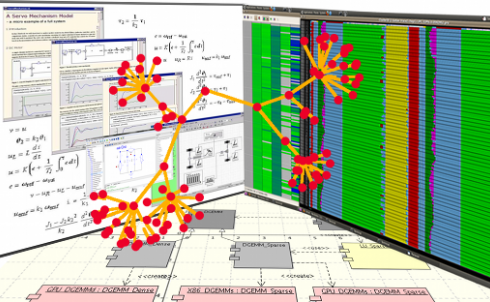The aim of the project is to develop an efficient high-order
method for Direct Numerical Simulations and Large Eddy
Simulations of wall-bounded incompressible flows with
accurate fulfillment of the divergence-free condition. One
of the main issues when numerically solving the Navier–
Stokes equations is the absence of an evolution equation for
the pressure. Over the years several methods have been
developed to deal with this, among the most popular are
writing the equations in vorticity-velocity form, and
predictor-corrector methods like the pressure correction or
fractional step method. In the former method the
pressure is eliminated by taking the curl of the momentum
equations, while in the latter method a Poisson equation for
the pressure is derived by taking the divergence of the
momentum equations. But in wall-bounded domains
unclarity still remains about the choice of boundary
conditions for the pressure. Most implementations of the
pressure correction method use a staggered mesh which
removes the need to solve for the pressure at the
boundary, but it also can filter high frequencies in
unintended ways and complicates implementation.
Kleiser and Schumann developed the influence matrix
method which calculates the boundary conditions for the
pressure which ensure that the discrete diver-
gence is numerically zero in the whole field. They used
Fourier collocation in the stream- and spanwise direction
and a Chebyshev-Tau method in wall-normal
direction. We extend their method to include the use of
compact finite differences on a collocated grid in wall-normal
direction. Compact finite difference schemes have better
resolution characteristics than the standard finite difference
schemes, while maintaining flexibility in the choice of grid
spacing and boundary conditions. The resulting Poisson
equation for the pressure contains a full matrix in the left-
hand side which is numerically expensive to solve. To lower
the computational cost and memory requirements, we
introduce a new method to solve the Poisson equation
which replaces solving the second order full system
by solving two first order banded equations.
In summary, our method allows the solution of the
incompressible Navier–Stokes equations with exactly zero
divergence on collocated meshes, in a fully banded
formulation.

